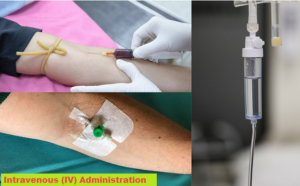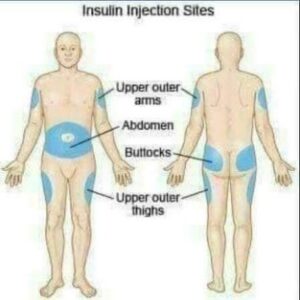What is the proper technique for IM&IV Injections?
Proper technique for IM&IV Injections: There is a lot of misinformation out there about intravenous (IM&IV) injections. Some people believe that you should never inject anything into a muscle or vein, while others believe that it’s always safe to inject anything into a vein. The truth is that there is no one perfect technique for injecting any type of medication. What matters most is the proper technique for the medication, the patient’s condition, and the site being injected.
Types of Injectables
There are many types of injections, and each requires a different technique. Some injections, such as IM&IV (intramuscular and intravenous) injections, require that the needle be inserted into a vein. Other injections, such as subcutaneous injections, can be done without a needle. The type of injection will determine the technique that is necessary for administering it.
What is an IM injection?
An IM injection is a type of injection that uses an IV to give medications directly into the bloodstream. It is used to treat a variety of conditions, including heart failure, stroke, and cancer. The proper technique for IM injections is important because it can reduce the risk of complications.
(i)-How to administer an IM injection
The most effective way to administer an IM injection is by using a proper technique. The injection should be given slowly and steadily, and the patient should remain still while the medication is being injected. One mistake that many people make is giving the injection too quickly or too much at once. This can cause the patient to experience side effects and may not be effective at all.

(ii)-The Important Anatomy of a Muscularis
There are many different techniques for IM injections, but the most important thing to remember is to aim for the muscle. The muscle is the largest and most important target when injecting an IM&IV. If you aim for the muscle and hit it correctly, you will achieve your desired result. There are a few things that can happen if you don’t hit the muscle correctly, and these include decreased blood flow to the area, bruising, and pain. If any of these occur after an injection, call your doctor immediately.
(iii)-Types of Drugs and Their Effects on Muscles
There are a variety of different types of injections and they all have different effects on muscles. The most common type of injection is an IM&IV, which stands for intra-muscular and intravenous. IM&IV injections are used to inject drugs directly into the muscle. They can be used to give patients medication, check for heart disease, or give them a shot to treat pain.
(iv)-What are the different routes of administration?
IM injections are a type of medication that is given through a vein. There are three different routes of administration: IM (intravenous), SC (subcutaneous), and IV (intravenous). Each route has its own advantages and disadvantages. IM injections are the most common, and they are usually the easiest to give. SC injections are less common, but they are sometimes faster than IM injections. IV injections are the fastest, but they can also be the most dangerous.

(v)-Proper technique for IM injections
When administering IM injections, it is important to use the proper technique. The improper technique can result in pain, damage to the muscle, and even paralysis. To avoid these problems, make sure to use the following steps:1. Clean the injection site using an antiseptic solution.2. Use a sterile needle if available.3. Inject slowly and deeply into the muscle.4. Hold the muscle tight for approximately two minutes after the injection has been made.
What is an IV Injection?
An IV injection is a medical procedure in which a doctor inserts a needle into a person’s vein in order to give them medication or fluids. There are different types of injections, but the most common is an IM&IV injection. This type of injection is used to give someone medication intravenously. IV injections can be given with or without anesthetic, and they are usually painless.
(i)-How to administer an IV injection

When administering an IV injection, it is important to be aware of the proper technique. The most common method for giving an IV injection is by using a syringe and needle. To give an IM injection, you will need a special needle designed for that purpose. If you are giving a subcutaneous injection, you will use a small needle that goes through the skin directly into the muscle. Finally, if you are giving an intramuscular injection, you will use a larger needle that goes into the muscle.
(ii)-The Important Anatomy of a veins
There are two types of injections- IM and IV. IM injections are administered into an individual’s vein while IV injections are given directly into a vein. There are many different techniques for both types of injections. The proper technique depends on the location and size of the veins.
(iii)-Types of Drugs and Their Effects on veins
There are many different types of drugs and each has a different effect on veins. When giving an IM injection, it is important to be aware of the type of drug you are giving and the effects it will have on veins. Some of the most common drugs that affect veins include: -Anesthetics (such as lidocaine and bupivacaine)-Vaccines (such as DTaP, HPV, and MMR)-Antiretroviral therapy (ART)- chemotherapy drugs-herbal remedies
(iv)-What are the different routes of administration?
There are multiple routes of administering injections, but they all have their pros and cons. The most common routes of administration are IM (intramuscular) and IV (intravenous). IM injections are quickest and easiest to administer, but they can be painful. IV injections are slower but more comfortable for the patient. They also tend to be safer because they don’t require any medical knowledge on the part of the healthcare provider.
(v)-Proper technique for IV injections

It is important to use the proper technique for IM&IV injections. If the injection is done improperly, it can cause serious health problems. Here are some tips to follow when giving an injection:-Make sure that the patient is sitting or lying down so that their muscles are relaxed-Clean the area around the injection site with a sterile wipe-Insert the needle very slowly and carefully into the muscle-Inject enough insulin to achieve the desired blood sugar level
Insoline Injection
There are many techniques for injecting Insoline. The most important thing is to make sure that the needle is inserted properly so that the Insoline is injected into the muscle correctly. Another important factor is the speed of injection. Too fast of an injection will result in a more painful shot, but too slow of an injection will also result in a less effective shot. There are also variations of Insoline injections such as IM&IV Injections that involve using two needles at once – one to inject the Insoline and another to draw it back out again.

Conclusion
There is no one correct way to inject an IM&IV. However, there are some general guidelines that should be followed in order to make the injection as safe as possible. Always use aseptic technique when injecting an IM&IV. This means that you should avoid contact with your skin and avoid breathing in any of the powder or liquid that might be released during injection. Make sure that the area you are injecting is clean and free from any objects that could cause injury if they were to hit the needle. Finally, use a sharp needle and inject the drug slowly into the vein.